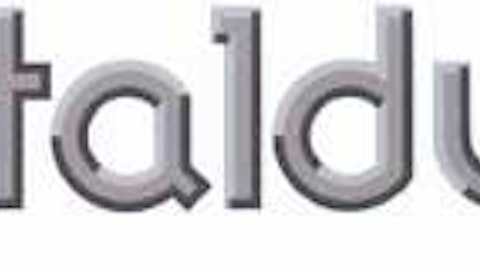The company’s aftermarket business makes life difficult for new entrants as well. Eaton generates over $4 billion in annual sales from aftermarket products and services, helping it maintain stickier customer relationships and retain its reputation for quality.
Aftermarket revenue also tends to carry high margins and allows Eaton to price some of its upfront equipment sales at levels that make it difficult for smaller competitors to earn a profit (a lot of the money is made in equipment support and services).
Smaller rivals lack the network needed to service multinational customers, who demand timely service and maximum uptime.
Eaton has over 13,000 authorized channel partners and 10,000 commercial resources it can use to efficiently reach customers all over the world. Replicating this network would likely take decades of time and cost millions of dollars.
The company’s management team has further solidified Eaton’s advantages through selective acquisitions and divestitures over the years.
Eaton has made more than 100 transactions since 2000 that have improved its profitability and served as a major driver of earnings growth.
The company’s Electrical segment alone purchased over 30 businesses and divested 11 companies since 2000, helping it improve margins from 10.4% to 15.3% in 2015.
Eaton’s most notable deal took place in 2012 when it acquired Cooper for $11.8 billion. Cooper manufactures electrical equipment (e.g. fuses, lighting controls, voltage regulators, circuit-protection equipment) that helps companies save money on energy.
The deal gave Eaton a larger product portfolio (its electrical addressable market expanded by $70 billion), more scale, and a denser distribution network to help it compete better with some of its bigger rivals.
Cooper was also domiciled in Ireland, which allowed Eaton to incorporate there and enjoy substantially lower tax rates on its corporate profits – Ireland’s tax rate is 12.5% compared with 35% in the U.S.
Today, Eaton is a dominant force across most of its markets. The company is one of the four largest electrical players in the world and is one of the three biggest hydraulics businesses. Approximately 70% of Eaton’s industrial sector products have a leading global or regional market share.
Despite the company’s size, most of its markets remain extremely large and fragmented, providing room for moderate growth. The electrical market is estimated to be $200 billion in size, and hydraulics is another $40 billion.
We expect Eaton will remain a force in its markets for many years to come thanks to its portfolio of well-established brands, strong distribution channels, and commitment to R&D.
Boost Your Dividend Portfolio
Eaton’s Key Risks
Like most industrial conglomerates, Eaton’s businesses are sensitive to global economic growth, industrial spending, manufacturing activity, commodity prices, and foreign currency exchange rates.
The company’s hydraulics business has suffered from the downturn in global mining and agriculture markets as well as the slowdown in Chinese construction projects.
Foreign currency headwinds have also dented recent growth.
While these macro issues are weighing on Eaton’s earnings today, they seem unlikely to impact the company’s long-term earnings power.
Instead, some of the bigger risks long-term investors should consider are the company’s sustainable earnings growth rate and the amount of taxes it pays.
The downsides of being such a large conglomerate are that incremental sales growth can be difficult, and some business lines are not going to be fully healthy.
Eaton’s 2020 plan targets organic sales growth of just 1-2% per year – hardly anything to get excited about. If the business struggles to get all of its cylinders firing at once, sales could tread water.
Companies with minimal growth prospects deserve to trade at a discount to the market and don’t really excite us much.
Instead of relying on the top line for growth, management’s 2020 plan expects restructuring actions to drive about half of Eaton’s annual earnings growth over the next five years.
The company has been closing down plants, reducing the size of its workforce, and improving manufacturing processes to lower its costs. However, there is only so much cutting that can be done to lift earnings – at some point, profitable sales growth is necessary.
We think Eaton can continue squeezing out low-single digit sales growth as long as global GDP keeps grinding higher, but our expectations are admittedly low.
Another risk that could materially impact Eaton’s earnings is its low tax rate, which sits near 10% thanks to its tax inversion following its 2012 acquisition of Cooper.
Eaton has received some heat from Donald Trump and Hilary Clinton over its actions to lower its taxes and shift more production out of the country.
If the government were to crack down harder on either of these issues, earnings would be reduced. We view this as a very unlikely scenario, but it would certainly impact Eaton and a number of other large multinational companies.
Overall, Eaton’s business diversification, long operating history, healthy cash flow generation, and slow-changing markets reduce its risk profile.





